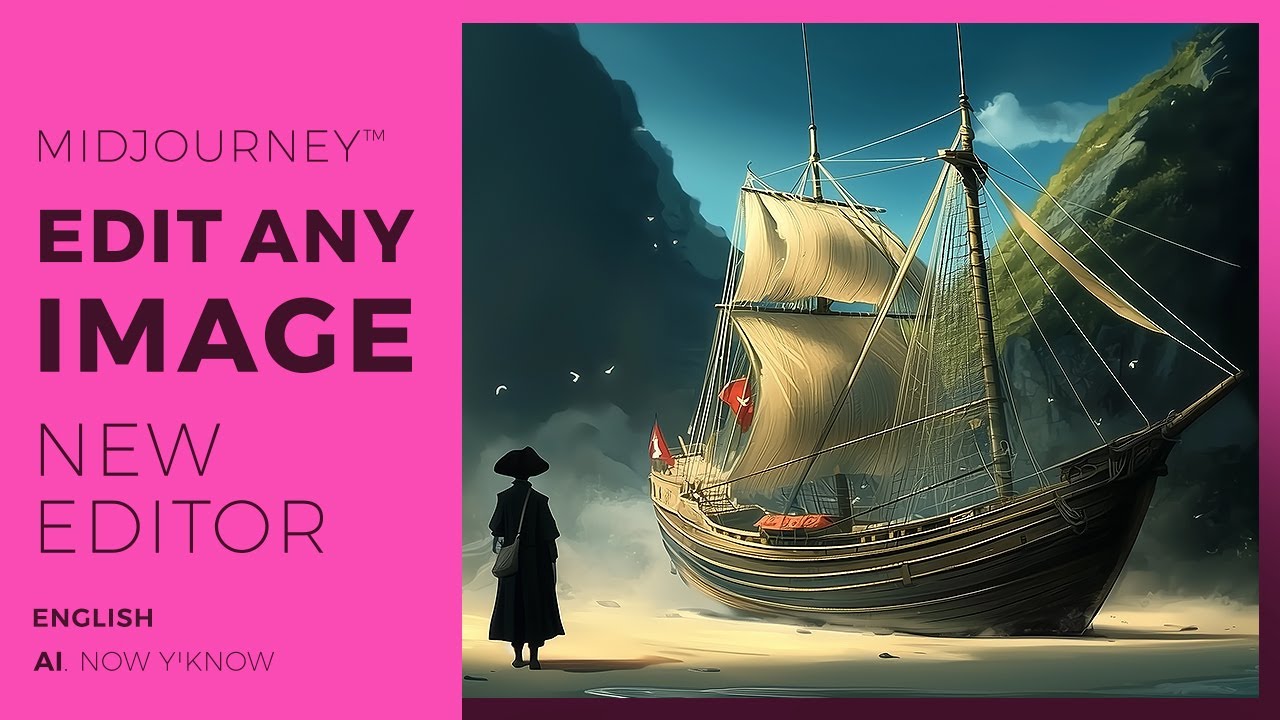Midjourney - Edit & Retexture - Edit Any Image with the External Image Editor.
Education

Introduction
Today marks an exciting milestone for all Midjourney users, as a new tool has been released that elevates the application's functionality to an entirely new level. This tool allows for the upload and editing of personal images, reminiscent of Photoshop. Users can also add new textures to their images, creating exceptional results. Let's dive into the details of this new feature, exploring how it works, who can use it, and why it matters.
Overview of the Update
To get started, visit the Midjourney website. In the bottom-left corner is a bell icon; clicking it reveals the update news. The announcement states that the external image editor has been released today. However, access to this feature is limited to a specific target group. Scroll down to the exclusion criteria, which state that you must have created at least 10,000 images and have an annual or monthly membership for a minimum of 12 months. As someone who meets these criteria, I can now explore and utilize the external image editor.
Feedback from other content creators has been positive, as they've indicated that this tool simplifies their workflow and makes editing fun.
Features of the External Image Editor
Once on the Midjourney website, you can find the new editing functions on the left-hand side. Two primary options—edit and retexture—are prominently displayed. Although the familiar prompt input interface is still here, the control panel for specific functions remains at the top, with a submit button on the right. Additionally, the history of individual modifications is documented in a large area in the center.
Users can upload images from external sources using the blue button or use self-created images via the brown button from their desktop or external hard drive. For example, after uploading an image of a king, I was able to activate editing functions, such as moving and resizing the image. Using white markers in the corners allows for adjustments in size, and you can reset your progress with the undo, redo, and reset buttons.
One remarkable feature is the erase function, which allows users to delete specific areas of the image, similar to painting. Users can adjust brush sizes for precision and restore marked areas with the click of a button.
Stepping further into the editing features, I uploaded an image of a woman and used the erase function to change her dress color, prompting the editor with "red dress with white dots." The resulting images displayed fantastic transformations, enabling users to modify the clothing of people within images seamlessly.
Unique Retexturing Capabilities
Another exciting aspect of the editor is its retexturing capability, which sees Midjourney recognizing the composition of the uploaded images. For instance, when I used an image of a banana in a field and prompted it for winter conditions, the banana was transformed to appear as though it was laughing in the snow.
The editor allows for extreme changes in an image while retaining the basic structure. For example, I created a medieval house from a simple image and even turned a drawing of a ship into a pirate ship styling.
The process allows artists to maintain their original proportions while adding advanced features similar to those found in high-end editing software.
After processing the images, the adjustments allow users to organize their creations through the "View All" button on the top right. Projects can be started or halted while managing uploaded images effortlessly.
Ensuring that the edited images transfer to the main create section requires users to select the "Upscale to Gallery" option. This function guarantees that images are stored for further processing. Alternatively, users can directly download images to their hard disk.
Conclusion
The external image editor in Midjourney is an innovative and powerful tool, opening up vast creative possibilities for users. It allows for easy modifications to images, introducing a level of flexibility and fun that's irresistible. Be sure to explore this tool if you have access, as it can significantly enhance your creative workflow, even from simple sketches.
Keywords
Midjourney, external image editor, edit images, retexture, upload images, brush size, prompt, image modification, creative workflow.
FAQ
Q1: What is the new feature released by Midjourney?
A1: The new feature allows users to upload and edit their own images in Midjourney, similar to Photoshop, and add new textures.
Q2: Who can access the external image editor?
A2: Access is limited to users who have created at least 10,000 images and have held either an annual or monthly membership for a minimum of 12 months.
Q3: What key functions can be performed with the new editor?
A3: Users can move, resize, erase parts of images, restore areas, and apply prompts to modify clothing and textures in the uploaded images.
Q4: Can I use an image from my desktop for editing?
A4: Yes, users can upload images from their desktop or external hard drive using the appropriate button in the editor.
Q5: How do I save my edited images?
A5: To ensure that your image is stored in the main create section, you must click on "Upscale to Gallery" after editing. You can also download the image directly to your hard disk.

